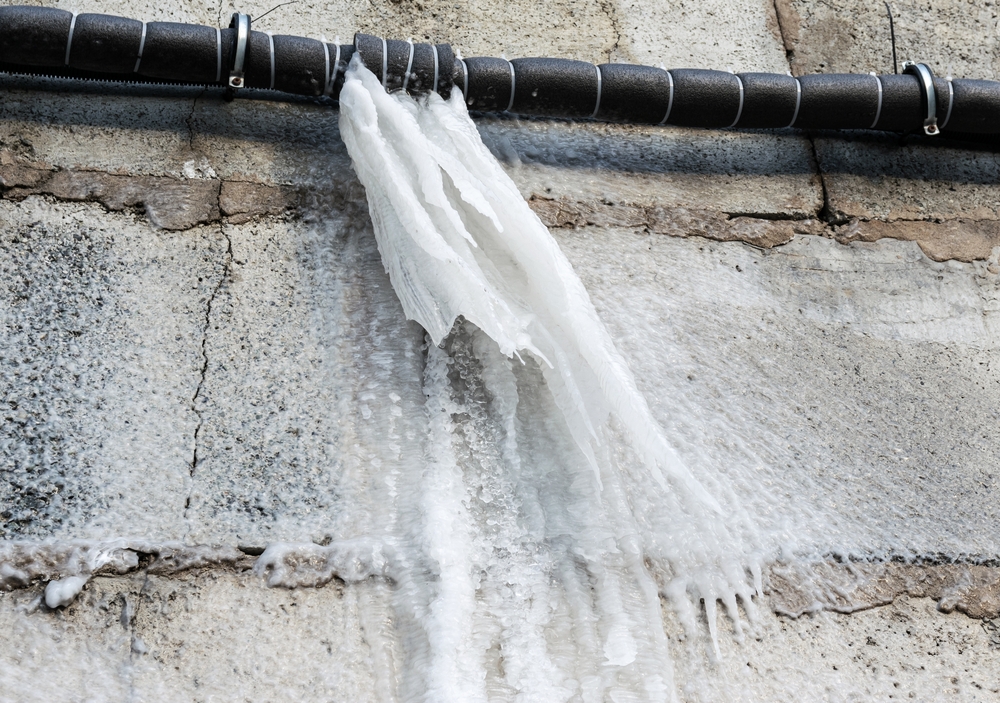The trees are bare. Mother Nature’s fury has started for winter. The clocks have been changed and with the additional hours of darkness, temperatures are now settling below freezing at night. As winter begins its annual visit, this is the time to minimize the opportunities for conditions leading to freezing pipes and their subsequent rupture, damage and disruption.
Water Damage Losses
Water damage losses are one of the most common losses during cold and freezing temperatures. These losses affect all areas of school buildings and create significant disruption to activities. Many of these losses are preventable with adequate pipe insulation, pipe tracing, heating system extensions, proper building management system setbacks and emergency generators.
Freezing and Bursting Pipe Basics
The time to start preparing is behind us. Being proactive now can keep your pipes warm and protected this winter. The following tips will prevent your pipes from freezing and keep water flowing this winter.
When pipes freeze, pressure builds and could result in them bursting at their weakest point, potentially causing water damage. Pipes in crawl spaces, exterior walls, team and locker rooms and outdoor hose bibs are particularly vulnerable, especially when they’re subjected to extra cold air.
We all know that freezing begins at 32° F, but at what point do pipes freeze within our buildings? Temperatures only need to drop to about 20° F for a few hours to put exposed pipes at risk. So, your best bet is to insulate your exposed pipes to keep that temperature well above the freezing point.
Best Practices to Keep Pipes from Freezing
The key to keeping your pipes away from freezing temperatures isn’t reaction - it’s preparation. Check out these tips on how to help you prevent the risk of your pipes even coming close to freezing temperatures.
Cover exposed pipes with insulation sleeves
Insulation sleeves, usually made of foam and are available at any building supply store, are inexpensive ways to surround your pipes with warmth and keep them from freezing in the cold temperatures. They’re affordable and easy to install, making them an excellent alternative to paying thousands of dollars to fix a frozen and burst pipe and its aftermath.
Seal cracks in the walls that let cold air in
A small wall crack that lets in a small account of cold air might not seem like a big deal but add all those little cracks together and you’ll find out that they’re costing you quite a bit of money on your heating bill and doing damage to your pipes, too. Seal cracks and openings around windows, doors, and at sill plates. Use weather stripping to stop the air from getting in and consider picking up a couple of draft stoppers for your doors to the outside. They’re both easy to install, help prevent your pipes from freezing and are even easier to remove come springtime.
Turn off and empty outdoor faucets
A pipe without water in it won’t be able to freeze or burst, so make sure you turn off any outdoor faucets. After shutting them off, open the faucet to drain any remaining water. While you’re at it, disconnect and store any hoses you might have left outdoors so they don’t become damaged by the freezing temperatures.
Pay attention to pipes in unheated or under heated areas of your buildings
Pipes in crawl spaces and basements run a higher risk of freezing than your main-level pipes, so make sure to take all tips into consideration and pay special attention to those areas.
Keep your garage and shop doors closed
Not only will closing your garage and shop doors keep critters from getting into your stuff, but it’ll also keep your garage or shop areas warmer and add an extra layer of protection to stop any pipes from freezing in these areas or along its walls.
Open interior faucets
If a cold snap is fast on the way and you don’t have time to take all the previous recommended steps, you can still help prevent frozen pipes with a simple turn of the faucet handle. Open your faucets just slightly to allow a small flow of water. Moving water is less likely to freeze, and it relieves excess pressure that builds if freezing does occur.
*The views and opinions expressed in the Public Risk Management Association (PRIMA) blogs are those of each respective author. The views and opinions do not necessarily reflect the official policy or position of PRIMA.*

By: J. Brett Carruthers, ASP, CSP, RSSP
Senior Vice President - Risk Management and NYSIR Director of Risk Management, Wright Public Entity
Summary of Qualifications
Brett is the senior vice president of risk management and director of innovation for Wright Public Entity, as well as director of risk management for the New York Schools Insurance Reciprocal. Brett counsels school administrators in methodologies to mitigate risk in school operations. He is an innovative thought leader and solutionist in public school risk management.
Brett has over 40 years of diverse safety and risk management experience. He is a graduate of Indiana University of Pennsylvania with a BS degree in safety sciences and a minor in human resource management. He is a professional member of the American Society of Safety Professionals serving in numerous elected leadership roles and a recipient of the prestigious Culberson Award for contributions to the Society. Brett is a fellow of the Los Angeles Council of Engineering and Scientists and an Edward J. Waring Lifetime Achievement Award recipient for his contributions to the safety profession by the Western New York Safety Council.
Responsibilities
Brett is responsible for all risk management program aspects for the NY Schools Insurance Reciprocal. He oversees the risk control team and the risk transfer team in their duties providing service to NYSIR's 345 members.
Business Experience
Brett is a safety and risk management professional with over 40 years of experience in both the public and private sectors. He has extensive experience in high risk construction, chemical process safety, municipal public sector safety/risk management and K-12 Public school safety/risk management.
Professional Affiliations
- American Society of Safety Professionals
- Board of Certified Safety Professionals
- Public Risk Management Association
Education
- B.S. Safety Science, Indiana University of PA
- Minor: Human Resource Management



